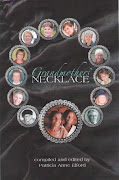
When I first heard Martha Alderson in an NAMW Teleseminar talking about plot in memoir writing, I was confused. How could a memoir have a plot? Wasn’t that for mystery or romance fiction? I checked her website and blog and forgot about it until recently, when I was trying to figure out how to structure my memoir.
What was unique about my story, in our family at least, was that we lived in a rooming house for the first 9 years of my life. I was the first born and the roomers were my extended family until we moved to the suburbs. A huge area of downtown – 20 square blocks - was my backyard. At first I wondered if I should just concentrate on the Charles Street stories and try to publish that part on its own.
Then I went back and had another look at the concept of plot. If I only did the Charles Street stories, there wasn’t much plot. “Girl grows up: first 9 years in downtown rooming house.” I examined all the readings and plotting tools Martha has on her blog especially The Plot Planner and the Scene Planner. I read all her tips about plot and memoir. I thought long and hard about the boundaries of my story and how much of my life story I wanted to tell.
The Plot Planner helped me to define the time frame and helped me realize that the Charles Street Stories were only The Beginning of my story. Moving to the suburbs was only the end of The Beginning ¼ of my book. The Crisis came later, in The Middle, and the Climax and Resolution, in The End.
I had to keep my eye on this ball and make sure the stories I include follow the plot of my character development and growth to adulthood. Otherwise, my story will just be a rambling mess of little stories that will fail to engage the reader, even my own children.
What was unique about my story, in our family at least, was that we lived in a rooming house for the first 9 years of my life. I was the first born and the roomers were my extended family until we moved to the suburbs. A huge area of downtown – 20 square blocks - was my backyard. At first I wondered if I should just concentrate on the Charles Street stories and try to publish that part on its own.
Then I went back and had another look at the concept of plot. If I only did the Charles Street stories, there wasn’t much plot. “Girl grows up: first 9 years in downtown rooming house.” I examined all the readings and plotting tools Martha has on her blog especially The Plot Planner and the Scene Planner. I read all her tips about plot and memoir. I thought long and hard about the boundaries of my story and how much of my life story I wanted to tell.
The Plot Planner helped me to define the time frame and helped me realize that the Charles Street Stories were only The Beginning of my story. Moving to the suburbs was only the end of The Beginning ¼ of my book. The Crisis came later, in The Middle, and the Climax and Resolution, in The End.
I had to keep my eye on this ball and make sure the stories I include follow the plot of my character development and growth to adulthood. Otherwise, my story will just be a rambling mess of little stories that will fail to engage the reader, even my own children.
Photo: My house on Charles Street, 2009





